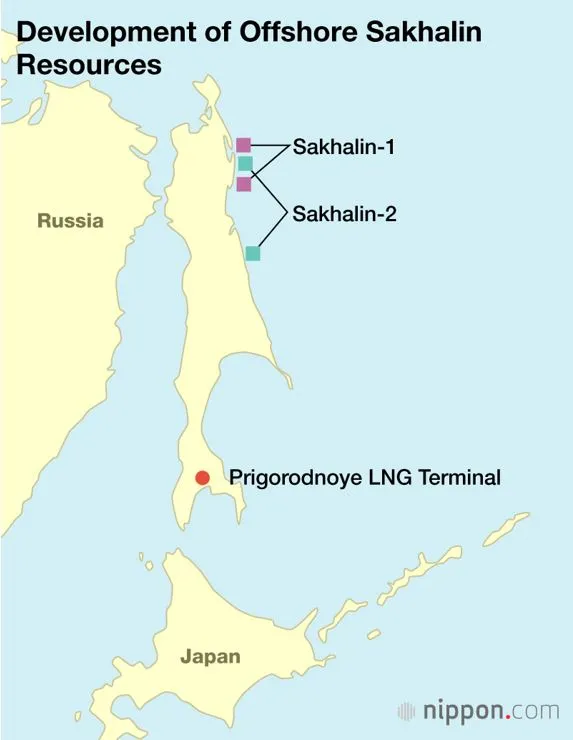

12th December 2024 (13 Topics)
Context
Japan is facing a crucial decision regarding its long-term liquefied natural gas (LNG) contracts with Russia’s Sakhalin-2 project, which will start expiring between 2026 and 2033. This project, managed by Gazprom, is important because it provides 9% of Japan’s LNG supply (about 6 million metric tons per year). However, Japan is now reconsidering its reliance on Russian LNG due to geopolitical issues and its shift towards cleaner energy sources.
Key Points of the Situation:
- Japan’s LNG Dependency on Russia: Japan depends on Russia for 9% of its LNG, sourced primarily from Sakhalin-2, located near Japan. The project has strong connections with Japanese companies like Mitsui and Mitsubishi, who own a 22.5% stake.
- Sakhalin-2 has a major advantage: it's geographically close to Japan, allowing for faster delivery of LNG compared to suppliers from places like Australia, Canada, and the U.S., which are farther away.
- Geopolitical and Energy Policy Shifts: Russia’s invasion of Ukraine has made Russian energy less popular in the global market, especially among Western countries. Japan is under pressure from its allies to reduce its dependence on Russian energy, even though Sakhalin-2 is exempt from U.S. sanctions.
- Japan is also focusing on reducing its reliance on gas. It aims for gas to make up only 20% of its power generation by 2030, down from 33% in 2023. At the same time, renewable energy is set to increase from 26% to 38% by 2030. This shift makes Japan’s demand for LNG less urgent.
- Impacts of Rising Geopolitical Tensions: Japanese buyers are concerned about continuing with long-term contracts from Sakhalin-2 due to the potential geopolitical risks of buying energy from Russia. Many Japanese companies have already started securing LNG from other countries like the S., Australia, Malaysia, and Oman to reduce reliance on Russian supplies.
- Alaska, Canada, and the U.S. are looking to fill the gap left by Russian LNG. Alaska’s LNG project is particularly appealing, as its distance from Japan is similar to Sakhalin-2’s, but without the geopolitical risks.
- Sakhalin-2’s Future and Potential Shortages: Sakhalin-2's gas field, Lunskoye, is nearing depletion. This means that Gazprom might not be able to maintain stable gas production from the field much beyond 2033.
- Russia has been trying to develop another gas field, Yuzhno-Kirinshoe, but U.S. sanctions have delayed its development.
- This uncertainty about future production means some Japanese companies may not want to renew contracts with Sakhalin-2, though others may have to because supply from nearby sources like Sakhalin-2 is crucial for energy security.
Challenges for Japan’s LNG Buyers:
- Japan’s LNG buyers, such as JERA and Tokyo Gas, are unsure whether to renew contracts. They are weighing the benefits of Sakhalin-2’s proximity to Japan against the political risks associated with Russian gas.
- These buyers are also aware that Japan can import LNG from other countries in the future, though at potentially higher prices. A move away from Russian LNG may lead to increased energy costs for Japanese consumers.
Japan's LNG Trading Flexibility:
- Japan has become increasingly active in LNG trading. This gives it the ability to source LNG from different countries, including the U.S., Canada, and Australia, without compromising its energy security.
- However, utilities still prefer the cheapest source of gas, and Russia’s Sakhalin-2 has traditionally been a reliable and cost-effective supplier.
Fact Box: Liquefied natural gas (LNG)
|



